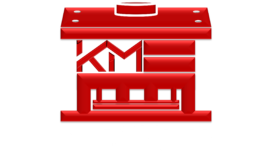Bosses
Bosses are projections on a part designed to add strength, to facilitate alignment during assembly or allow for fastening additional parts. The most common variety consists of cylindrical projections with holes designed to receive screws, threaded inserts, or other types of fastening hardware.
General rule for design is the outside diameter of bosses should remain within 2.0 to 2.4 times the outside diameter of the screw or insert. It is suggested to avoid bosses that merge into sidewalls because they can form thick sections that cause lead to sink.
Normally, the boss hole should extend to the base-wall level, even if the full depth is not needed for assembly. Shallower holes can leave thick sections, resulting in sink. Deeper holes reduce the base wall thickness, leading to filling problems, knit lines, or surface blemishes. Because of the required draft, tall bosses (those greater than five times their outside diameter) can create a filling problem at their top or a thick section at their base. Additionally, the cores in tall bosses can be difficult to cool and support. Think about coring a tall boss from two sides or extending tall gussets to the standoff height instead of than the whole boss.
RIB THICKNESS
There are many factors that determine the appropriate rib thickness for a part. Often if ribs are too thick they can cause sink, a cosmetic problems on the opposite wall surface. The material, rib thickness, surface texture, color, proximity to a gate, and a variety of processing conditions determine the severity of the sink.
Rib Location & Quantity:
Proper thought should be used when deciding on the location and quantity of ribs within a part. For example, ribs added to increase part strength and prevent breakage may reduce the ability of the part to absorb impacts without failure.
Furthermore, a grid of ribs added to ensure part flatness may lead to mold-cooling difficulties and warpage.
Typically much easier to add than remove, ribs should be applied sparingly in the original design and added as needed to fine tune performance.
RIBS
Providing ribs within a design reinforces strength and stiffness in molded parts without increasing overall wall thickness. Proper rib design involves five main criteria: thickness, height, location, quantity, and mold-ability.
Other uses for ribs are as follows:
They act as stops or guides for mechanisms
Ribs locate and captivate components within an assembly
They provide alignment in mating parts
THICKNESS TRANSITIONS
By rounding or tapering transitions in part thickness will minimize read-through and possible surface blemishes. Additionally, the practice of material blending may reduce molded-in stresses and stress concentration associated with abrupt changes in thickness.
CORNER DESIGN
The general practice of designing the outside corner radius of a part to one wall thickness larger than the inside radius will maintain a constant thickness through corners.
CORING AND WALL THICKNESS
Parts that are too thick will result in warping and sink marks. By shelling out thick areas a more uniform part can be achieved while also reducing material costs. Rigidity can still be maintained in a shelled part by placing ribs inside the shelled out part. Wall thickness details are below:
Sink marks and warpage best avoided by designing your part with uniform wall thicknesses. Even further different polymers shrink at different rates. To yield the best results, Eck Plastics recommends using the wall thicknesses listed below:
DRAFT
To prevent parts from being damaged during ejection from the mold, a taper is applied to the faces of the part that parallel with direction of the mold opening. Recommended draft is as follows:
Draft all surfaces parallel to the direction of mold separation
Angle walls and other attributes that are formed in both mold halve to assist ejection and retain uniform wall thickness
As a general rule, use the standard one degree of draft plus one additional degree of draft for every 0.001 inch of texture depth
Use a draft angle of at least one-half degree for most materials. Design permitting, use one degree of draft for easy part ejection. SAN resins typically require one to two degrees of draft.
